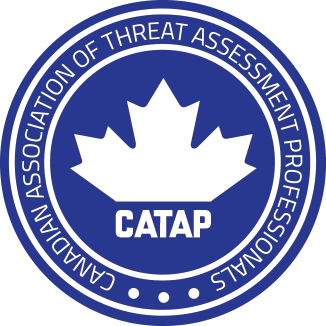


Tactical and Operational Threat Assessment
By Bruce Hennes, CEO, Hennes Communications
The scribbled threat on the bathroom mirror. The cryptic email. The whispered voicemail. The strange guy with the backpack. The employee who’s going to be fired next week…will he or she do something harmful to themselves or others?
More often than not, we get calls from potential clients seeking our help in situations where what they do is more important than what they say. While we certainly make situational assessments almost every time we’re called (matter of fact, I’m a former member of CATAP – The Canadian Association of Threat Assessment Professionals), with situations like the above we’re quick to suggest the engagement of the police or a trained threat assessment professional.
Should you encounter a situation where that little voice in the back of your head says “Danger, Will Robinson. Danger !!,” we urge you to follow that little voice. Give us a call at 216-321-7774 and we’ll do our best to give you a reality check and, if necessary, refer you to a trained and qualified professional threat assessment expert.
In the meantime, here’s a very interesting article from At Risk Magazine:
As we see repeated incidents of targeted violence occur, the common theme of pre-planning leading up to execution of the attack strategy comes to light. For some reason though much of what should help us discern between a person of concern and the average citizen is lost in the cluster of information circulating. Moving the needle beyond dialogue to effective identification and mitigation strategies requires a change in our culture that will inevitably take time to occur.
A peer of mine made an insightful comment yesterday, “continued attacks will drive greater fear of personal safety and by its nature improve situational awareness”. I would urge everyone to consider that comment. How many more senseless attacks will need to take place before we, as a society, decide that we need to invest in improving the education of the public to make a positive change?
This education must include a clear understanding of the public’s role in Tactical and Operational Threat Assessment (TOTA™). Behavioral-based threat assessment has proven its effectiveness over the years, but many times there appears to be a disconnect between what is considered situational awareness and longer-term assessment of an individual’s propensity for violence. The reality is, they are interconnected and understanding this bridge is essential to identifying persons of concern early. We cross this bridge within the threat assessment community. On the other hand, practitioners of protective security operations work within the framework which means that the criticality of linking individual behaviors and activities to longer term threat assessment is sometimes lost in the noise. Below is a sample outline that I utilize in training our customers and teams:
- Behavioral indicators – These are observable behaviors that fit into the “see something say something” context however we need to take it to a more granular level. Reporting obvious security risks such as a person with a gun or an unattended backpack are fundamental. Elevating the value of behavioral indicators requires that the collectors raise their concerns for the individual or group based on things that “just don’t look right”. Executive protection professionals have been trained in this concept for decades; to recognize persons that are behaving in a manner that doesn’t fit the context of the event. For example, a security specialist may notice an individual acting abnormally during behavioral stimulation (questioning designed to elicit information regarding their purpose) or coworkers of the would-be offender may see early signs of fixation. Individually they may not mean much, but collectively they suggest an unhealthy obsession may be developing. For instance, the killer of Christina Grimmie, a 22-year-old singer who made her name on NBC’s “The Voice”, was someone that presented behaviors that concerned his coworkers.
For the rest, click here.
BONUS BOOK RECOMMENDATION – THE GIFT OF FEAR
From Amazon.com:
True fear is a gift. Unwarranted fear is a curse. Learn how to tell the difference.
A date won’t take “no” for an answer. The new nanny gives a mother an uneasy feeling. A stranger in a deserted parking lot offers unsolicited help. The threat of violence surrounds us every day. But we can protect ourselves, by learning to trust—and act on—our gut instincts.
In this empowering book, Gavin de Becker, the man Oprah Winfrey calls the nation’s leading expert on violent behavior, shows you how to spot even subtle signs of danger—before it’s too late. Shattering the myth that most violent acts are unpredictable, de Becker, whose clients include top Hollywood stars and government agencies, offers specific ways to protect yourself and those you love, including…how to act when approached by a stranger…when you should fear someone close to you…what to do if you are being stalked…how to uncover the source of anonymous threats or phone calls…the biggest mistake you can make with a threatening person…and more. Learn to spot the danger signals others miss. It might just save your life.
For more information on this book, click here.